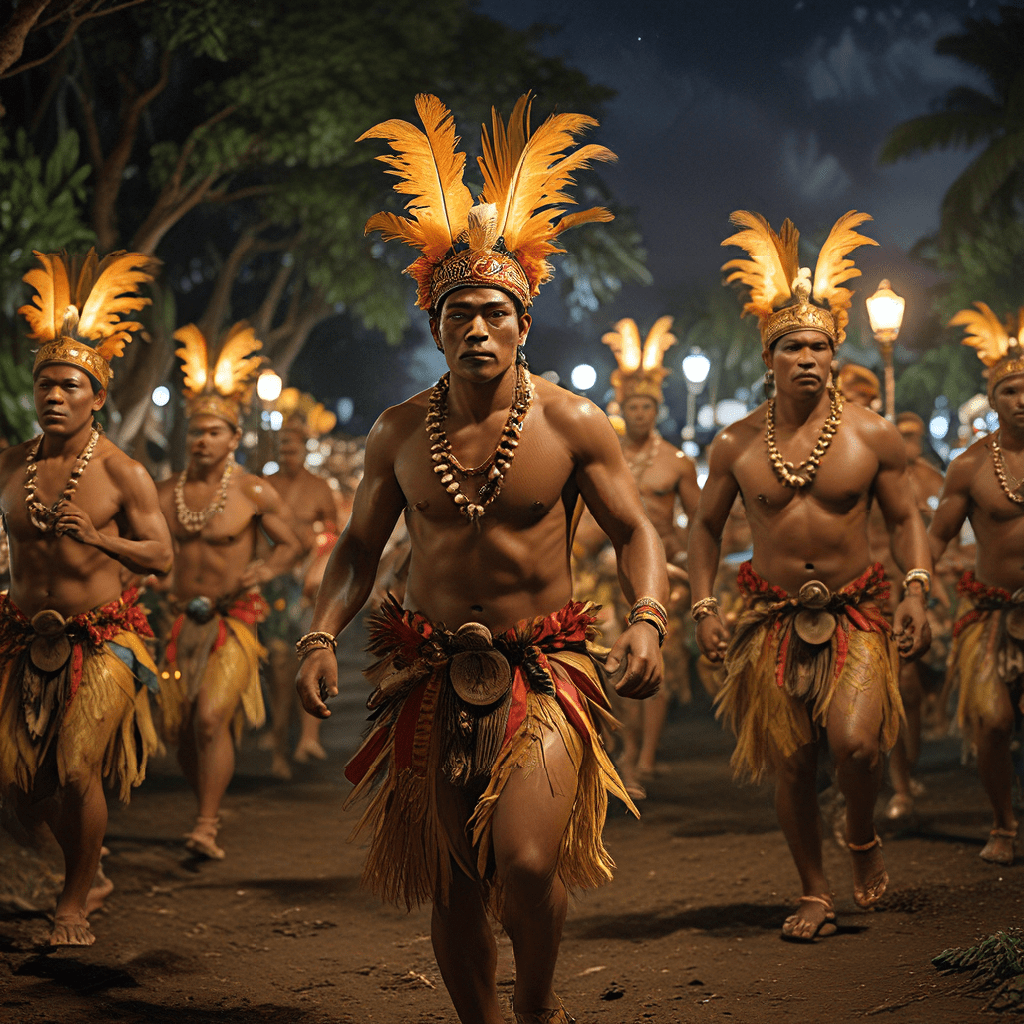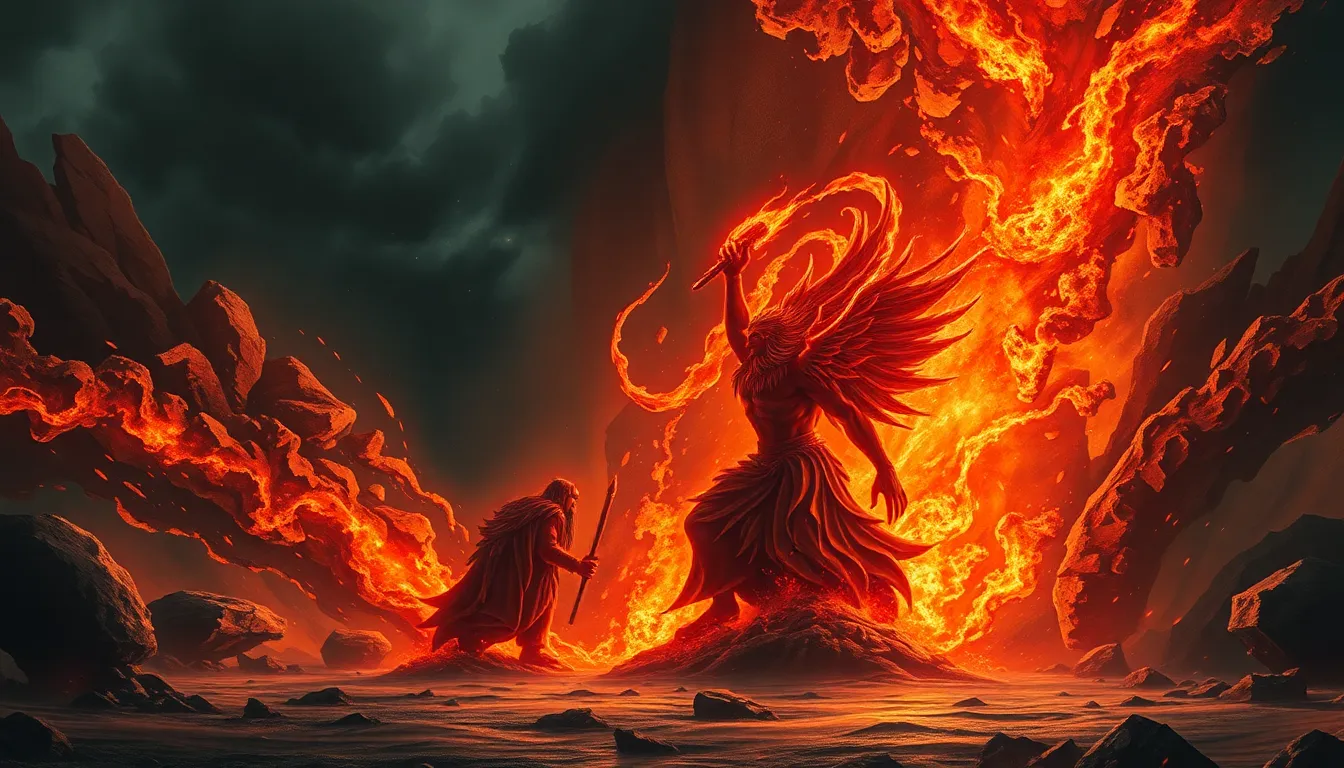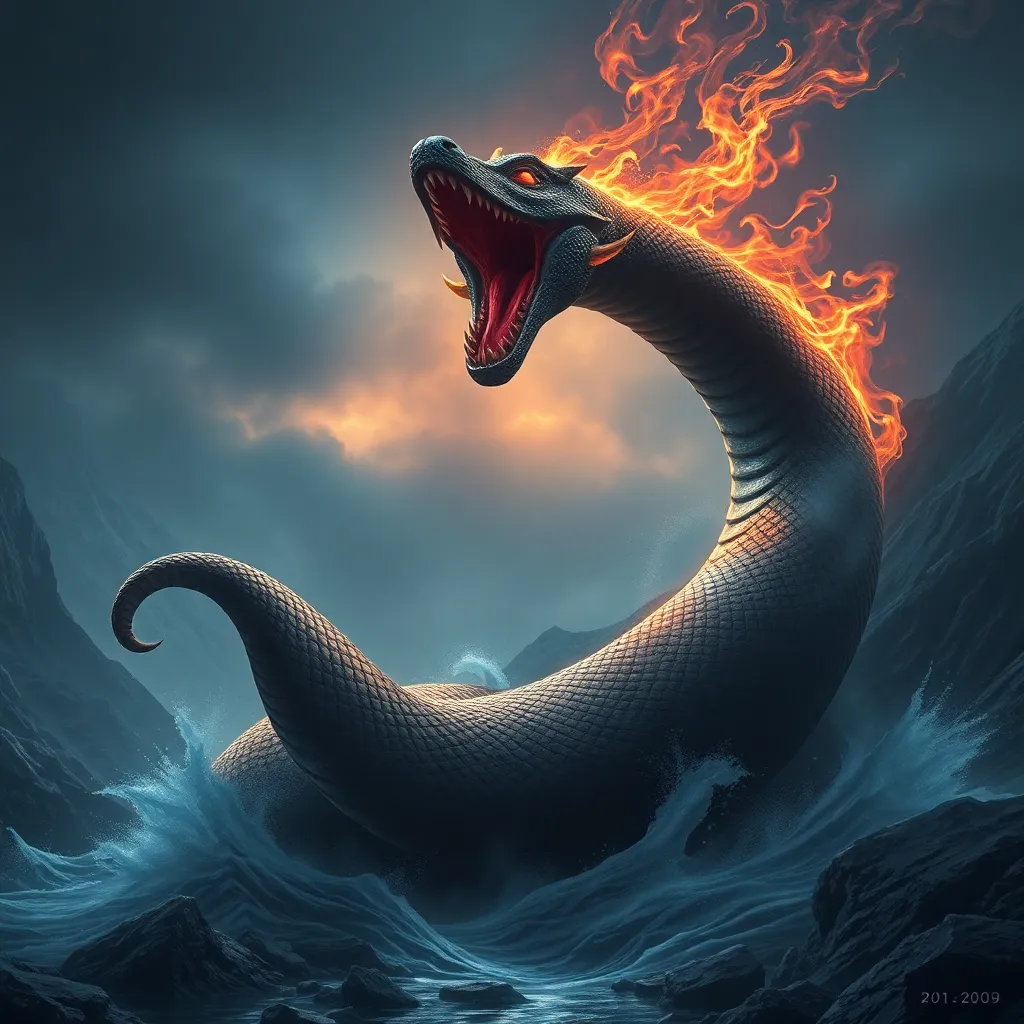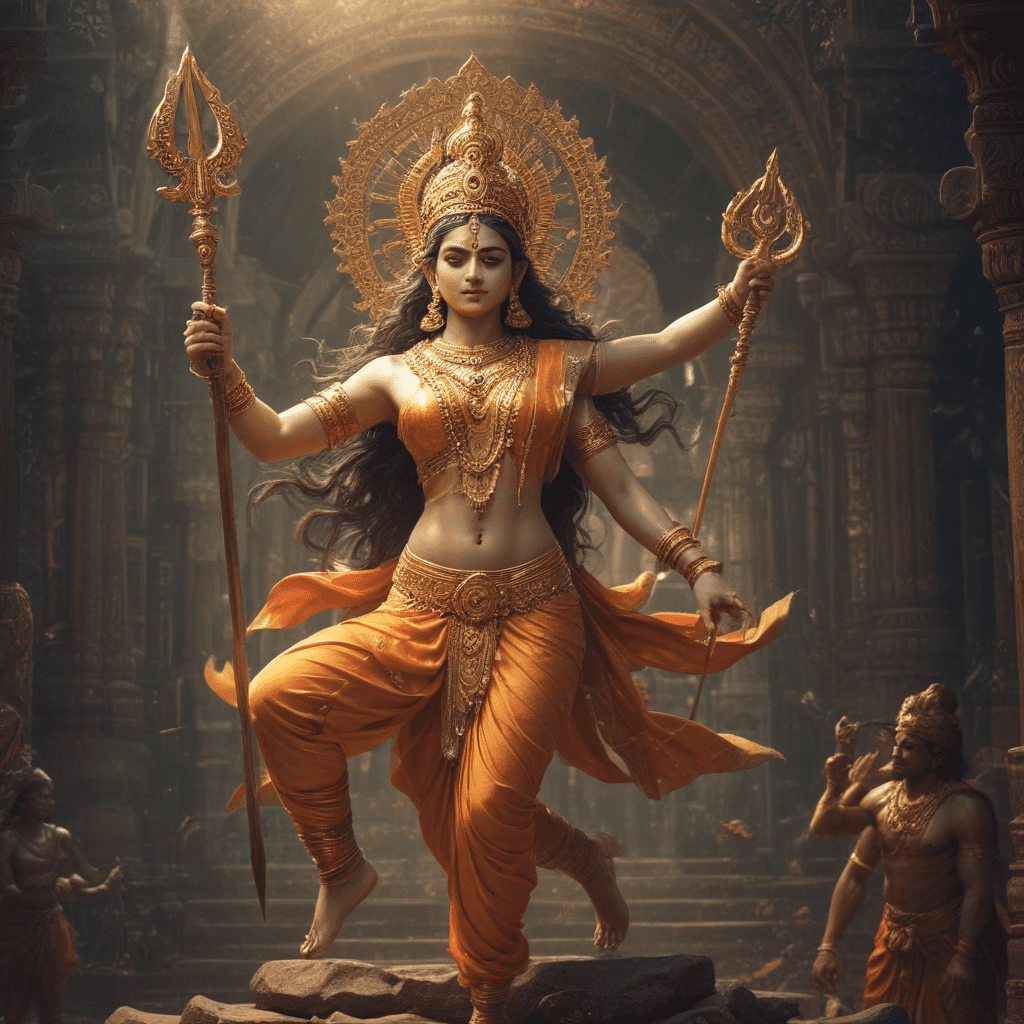The Night Marchers: Guardians of the Land
In the captivating world of Hawaiian folklore, where myths and legends intertwine with the vibrant landscape, the Night Marchers hold a powerful presence. These mysterious figures, known as "huakaʻi po" in the Hawaiian language, are often described as spectral warriors, kings, or spirits, marching in solemn processions through the night. Their presence is shrouded in an aura of fear and reverence, leaving a lasting impact on the cultural identity of the Hawaiian people.
The legends of the Night Marchers are deeply ingrained in the fabric of Hawaiian history and tradition, serving as a poignant reminder of the interconnectedness between the physical and spiritual realms. From ancient warriors to powerful deities, these spectral beings are believed to be guardians of the land, embodying the ancestral spirits and the sacredness of the Hawaiian landscape. Their movements are often associated with important historical events, natural phenomena, and the delicate balance within the natural world.
The Haunting Spectacle: Describing the Night Marchers
The Night Marchers are described in various ways, with their appearance often reflecting the specific legend or cultural context. In some accounts, they are depicted as warriors clad in feathered cloaks and carrying spears and drums, their faces obscured by masks or painted with fearsome designs. Others portray them as royal figures adorned in elaborate garments, their procession led by a powerful king or queen.
Regardless of their specific manifestation, the Night Marchers are always described as moving in a silent, disciplined march, their footsteps echoing in the stillness of the night. Their movements are often accompanied by the haunting sounds of drums, chants, and the clash of weapons, creating an atmosphere of both awe and terror.
The Night Marchers are often seen as a reminder of the power and majesty of the ancient Hawaiian culture. Their presence serves as a powerful symbol of the interconnectedness between the physical and spiritual realms, reminding people of the importance of respecting the land and its sacred sites.
The Sounds of the Night: Drums, Chants, and the Marching Rhythm
The sounds associated with the Night Marchers are as important as their visual appearance. The rhythmic beat of drums, the haunting melodies of ancient chants, and the synchronized steps of the march create a sonic landscape that is both mesmerizing and terrifying. The drums, often made from hollowed-out logs, are said to resonate with the heartbeat of the earth, while the chants are believed to carry messages from the ancestors and the gods.
The rhythmic cadence of the Night Marchers' march is believed to be a reflection of the natural world, echoing the cycles of the moon, the tides, and the seasons. The sounds of the march serve as a reminder of the interconnectedness of all things, and the importance of maintaining balance within the natural world.
The Night Marchers and the Hawaiian Landscape: Sacred Sites and Ancient Trails
The Night Marchers are deeply connected to the Hawaiian landscape, their movements often linked to sacred sites, ancient trails, and natural landmarks. The ancient trails, known as "heiau," were used for ceremonial purposes and were believed to be pathways between the physical and spiritual realms. The Night Marchers are said to travel these trails, their presence seen as a sign of the continued vitality of the spiritual world.
Many of the places where the Night Marchers are said to appear are associated with important historical events or ancient stories. These sites are often revered by the Hawaiian people, and their presence is seen as a reminder of the importance of protecting the land and its sacred places.
The Night Marchers: Warriors, Kings, or Spirits?
The identity of the Night Marchers is a matter of debate among scholars and traditional storytellers. Some believe they represent the spirits of ancient warriors, their march a re-enactment of battles fought in the past. Others see them as the spirits of kings and queens, their procession a reminder of the power and authority of the ancient Hawaiian royalty.
A more spiritual interpretation interprets them as the embodiment of the gods or ancestral spirits, their movements reflecting the presence of the divine in the natural world. Regardless of their true nature, the Night Marchers are viewed as powerful entities, capable of both good and evil, and demanding respect and reverence from those who encounter them.
The Night Marchers and the Living: Encounters, Warnings, and Respect
The legends of the Night Marchers warn people against disturbing their processions or interfering with their sacred movements. Encounters with the Night Marchers are often viewed as a sign of bad luck, a warning of impending danger, or a reminder that one has crossed the boundaries of the sacred. People who encounter the Night Marchers are advised to remain calm, avoid eye contact, and allow them to pass without interference.
If you hear the sounds of drums or chants in the night, or see lights flickering in the distance, it's best to stay indoors and avoid venturing out. The Night Marchers are believed to be guardians of the land, and their presence is a sign that you should respect the balance of nature and avoid disturbing the sacred places.
The Night Marchers: A Warning of Disrupting the Balance
The Night Marchers are seen as a reminder of the delicate balance that exists within the natural world. Their presence is often associated with natural disasters, such as earthquakes, volcanic eruptions, or tsunamis. These events are seen as a warning from the Night Marchers, a reminder that humans must respect the power of nature and live in harmony with the land.
Stories of the Night Marchers are a strong reminder to the Hawaiian people of the importance of preserving the environment, respecting tradition, and staying connected to the spiritual world. They are a reminder that the land is sacred and that the ancestors are always present, watching over the Hawaiian people.
The Night Marchers: Legacy of Fear and Reverence
The Night Marchers continue to hold a powerful place in Hawaiian folklore, inspiring a mix of fear and reverence in the hearts of the people. Their presence is a reminder of the spiritual world, the importance of respecting the land, and the power of tradition.
The legends of the Night Marchers serve as a cautionary tale, a reminder that humans are not the only inhabitants of the world, and that respect for the natural world and its sacred sites is essential for maintaining balance and harmony.
Theories of the Night Marchers: Historical Interpretations
Historians and anthropologists have proposed several interpretations of the Night Marchers, attempting to understand their origins and significance within the context of Hawaiian history and culture. Some suggest the Night Marchers represent ancient Hawaiian warriors, their processions reflecting the movements of armies during times of war or conflict.
Others believe the Night Marchers represent the spirits of ancestors, their movements marking the passage of time and the continuity of Hawaiian traditions. The historical interpretations provide valuable insights into the cultural context in which these legends arose and the anxieties that shaped them.
Theories of the Night Marchers: Spiritual Significance
Beyond historical interpretations, the Night Marchers hold a profound spiritual significance for the Hawaiian people. They represent the interconnectedness between the physical and spiritual realms, embodying the belief that the spirits of the ancestors are always present, guiding and protecting the living.
The Night Marchers are seen as guardians of the land, their movements signifying the power and majesty of the natural world. The spiritual significance of the Night Marchers serves as a reminder of the interconnectedness of all things, and the importance of living in harmony with the natural world.
FAQ:
1. What are Night Marchers?
The Night Marchers, known as "huakaʻi po" in Hawaiian, are mysterious figures from Hawaiian folklore. Often described as warriors, kings, or spirits, they march in solemn processions through the night, often considered guardians of the land.
2. Why are they called Night Marchers?
They are called Night Marchers because they are primarily seen and heard at night, moving in marching formations, typically seen as spectres.
3. What do Night Marchers look like?
Descriptions vary, but common elements include warriors in feathered cloaks, carrying spears and drums, or royal figures in elaborate garments. Their faces might be obscured by masks or painted with fearsome designs.
4. What sounds are associated with Night Marchers?
The sounds of drums, chants, and the synchronized steps of the march create a haunting atmosphere. The drums are said to resonate with the heartbeat of the earth, while the chants carry messages from ancestors and gods.
5. Where are Night Marchers typically seen?
They are often seen near sacred sites, ancient trails, and natural landmarks, reflecting their connection to the Hawaiian landscape.
6. What are the different interpretations of Night Marchers?
Interpretations range from spirits of ancient warriors to spirits of royalty, or embodiments of gods and ancestors. Some view them as historical figures, while others see them as purely spiritual entities.
7. What is the significance of the Night Marchers?
They symbolize the interconnectedness of the physical and spiritual realms, the importance of respecting the land, and the power of tradition. They serve as a reminder of the ancestors, the balance of nature, and the importance of protecting sacred sites.
8. How are the Night Marchers relevant to modern-day Hawaiians?
They remain a powerful part of Hawaiian folklore, inspiring caution and reverence. They serve as a reminder of the importance of preserving the environment, respecting tradition, and staying connected to the spiritual world.



